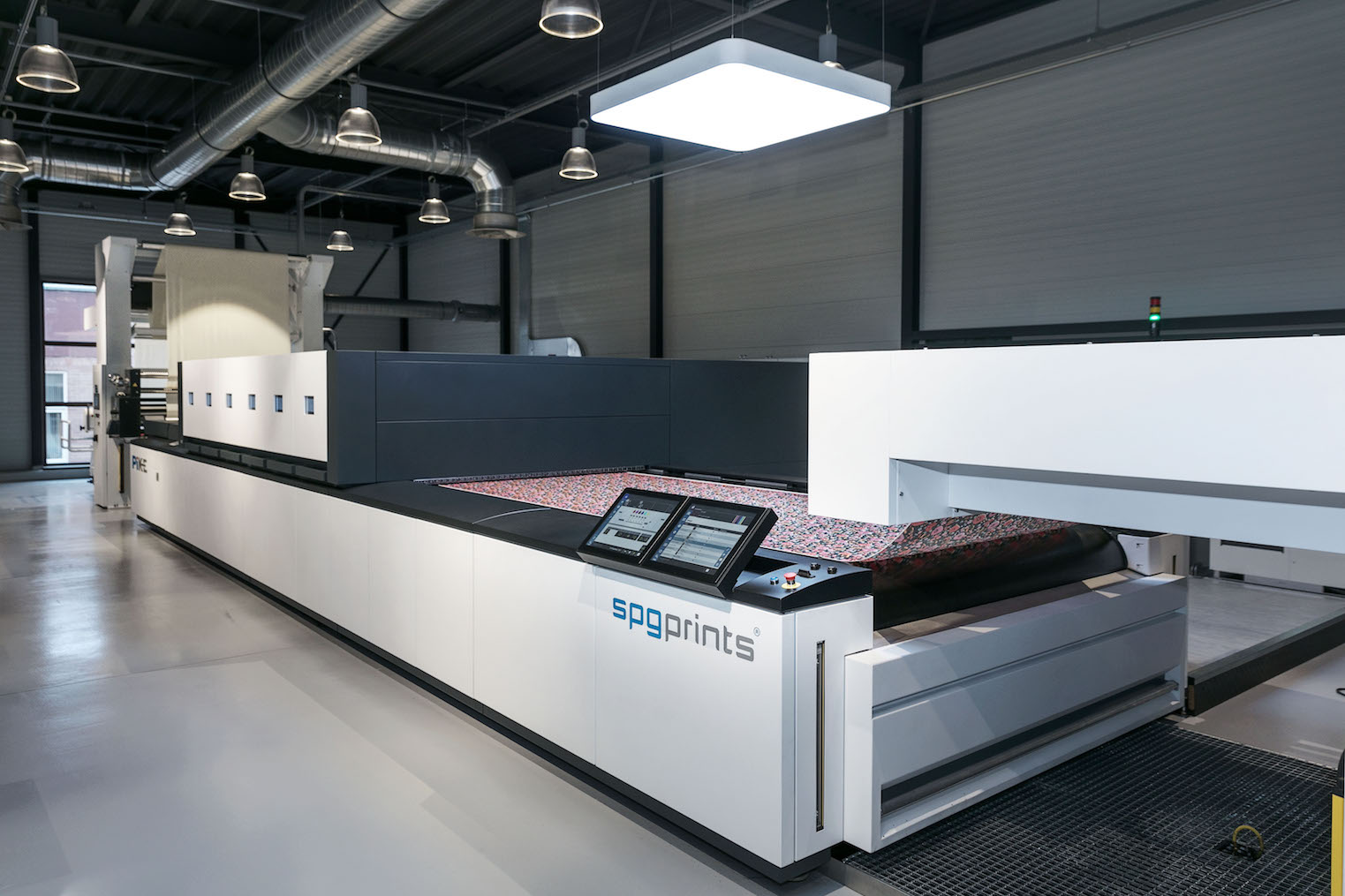SPGPrints was the proud sponsor of the WTIN Textile 4.0 Conference, held by the World Textile Information Network, in Amsterdam, on October 25th and 26th 2017. The conference also included a complementary visit to SPGPrints’ Experience Center in Boxmeer, to view live demonstrations of the PIKE® and JAVELIN® inkjet printing systems with Archer® technology, and appreciate the quality, flexibility and simplicity they offered.
Attracting 150 delegates from all stages of the textile value chain, the sold-out inaugural conference looked at how new digital technologies and business models associated with the concept of Industry 4.0 are affecting the textile industry. Industry 4.0 is about the digitalisation of the supply chain: smart manufacturing, where computerised systems monitor physical processes and make decentralised decisions. Systems with high levels of automation and connectivity communicate with each other as well as humans, via the Internet.
Speakers at the conference set out the implications of Industry 4.0 on the value chain, providing insight into how such themes as automation, customisation, machine-to-machine communication and the analysis of process data will impact investment and change customer-supplier relationships. Thirty-one countries were represented, including the Americas, Asia and Australasia, emphasising the global significance of the event.
Inkjet printing systems for textiles are a perfect complement to the automated, interconnected and lean workflow envisioned by conference speakers. Not only do they offer the enhanced quality for achieving the brand-owners’ concepts; they also enable significant cost reductions in the supply chain - and the ability to react much faster to fashion trends.
Experience Center tour
At the end of the first conference day, SPGPrints took delegates to its Experience Center – the 700m2 innovation and training facility at the company’s Boxmeer headquarters - to show the quality, productivity and flexibility of the PIKE single-pass and JAVELIN multi-pass printers based on Archer technology.
Attendees observed live demonstrations, showing both machines’ capabilities for delivering fine detail and challenging geometric designs; bright, saturated blotches across the complete fabric width; constant, precise colour targets; and immediate job changes.
SPGPrints’ Archer technology features piezo-electric print heads to produce variable drops, ranging from 2-10pL at resolutions of up to 1200 x 1200 dpi. Ink is precisely fired onto substrates from a distance of 4mm – a significantly longer nozzle-fabric distance compared with alternative technologies. This means a wider range of substrates can be run, minimising the chance of print head damage. Using only six colours, Archer technology enables a gamut wider than the HD-gamut of other digital textile printing solutions.
The PIKE, for situations where a higher annual capacity is needed, is a single-pass, 1850mm-wide printer, with a fixed array of print heads. Operating speeds of up to 40 linear meters per minute are possible. The JAVELIN uses a multi-pass scanning action to deposit inks. It has an output of up to 367 metres per hour and is available in print widths of 1850mm and 3200mm – the latter with being ideal for home furnishing applications.
Following the visit, attendees expressed their enthusiasm for SPGPrints’ technology.
Murat Aktas, procurement manager of Menderes Tekstil, a textile printing operation based in Sarayköy Denzili, Turkey, commented: “The tour of SPGPrints’ Experience Center was an excellent opportunity to inspect the technology close-up and learn more about the impact digital printing can have on the supply chain. The Archer technology’s quality and flexibility was most impressive.”
Jo Conlon, senior lecturer in fashion and textile buying, management and retailing at the University of Huddersfield, said: “At the SPGPrints facility, it was impressive to see how traditional rotary screen and digital technologies worked together and how the innovations and years of expertise were feeding into the digital enterprise. Seeing the live demonstrations at the was also a useful insight into the design capabilities, and it is pleasing to see that challenges such as full blotch and geometrics have been overcome in last few years. I got a strong sense that digital printing is taking off, and that even at three per cent of world textile production, the process is already massive in terms of output. The case of major printing operations producing 50,000 metre-orders for global fashion brands is more evidence of exciting manufacturing opportunities emerging in Europe.
As an educator, I want to encourage a transformative mind-set in our students so they come to learn about the existing processes and, also, how they challenge them. Both the conference and the visit to SPGPrints provide the inspiration to do so.”
www.spgprints.com

